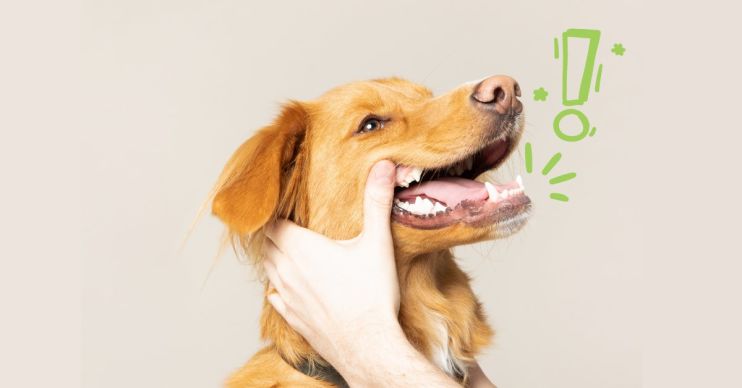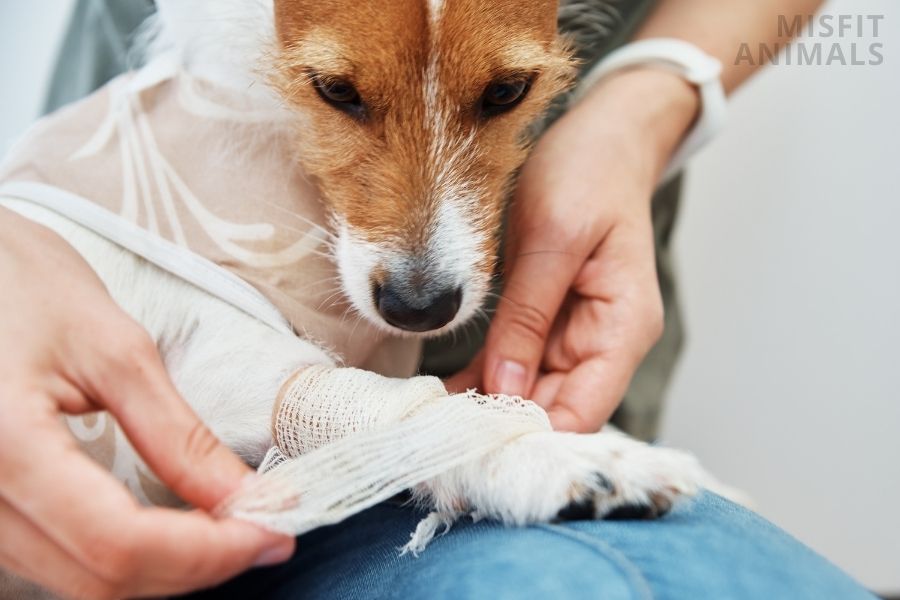In the world of dogs, there exists a mysterious and intriguing phenomenon: shaking. As dog owners, we often witness our furry companions tremble or shiver for seemingly no reason at all. It is a sight that can evoke both curiosity and concern within us.
Why do dogs shake? This question has puzzled pet lovers around the globe, prompting an exploration into the various factors that contribute to this behavior. Understanding why dogs shake requires delving into their complex nature as beings capable of experiencing a wide range of emotions and physical sensations.
While some instances of shaking may be completely normal and harmless, others may indicate underlying medical conditions or psychological distress. By unraveling the intricate web of physiological responses, communication behaviors, breed characteristics, allergies, training techniques, and potential health issues associated with shaking in dogs, we hope to shed light on this enigmatic canine behavior.
So join us on this journey as we seek to uncover the reasons behind why our beloved companions shake. Through knowledge and understanding, we can better serve our four-legged friends in their moments of vulnerability.
Key Takeaways
- Dogs shake for various reasons, including temperature changes, communication, social behavior, fear, and nervousness.
- Shaking can serve as a calming technique for dogs when they are anxious or stressed.
- Dogs may shake when adjusting to new environments or experiencing travel anxiety.
- Traumatic experiences can leave a lasting impact on dogs’ emotional well-being and cause shaking.
Normal Physiological Responses

Normal physiological responses can cause dogs to shake, which can evoke concern or worry in dog owners. One of the most common reasons for shaking in dogs is abnormal shaking caused by temperature changes. Dogs have a higher body temperature than humans, and they rely on panting and sweating through their paw pads to regulate their body heat.
When exposed to cold temperatures, dogs may start shaking as a way to generate heat and maintain their body temperature. Similarly, when exposed to hot temperatures, dogs may shake as a response to cool down their bodies. This shaking is considered normal and should not be a cause for concern unless it becomes excessive or accompanied by other symptoms such as lethargy or loss of appetite.
It is important for dog owners to provide appropriate environmental conditions and monitor their pets’ behavior during extreme temperature fluctuations.
Communication and Social Behavior

This paragraph will discuss three key points related to communication and social behavior in dogs: submission or appeasement, playful or happy behavior, and attention-seeking.
Dogs often display submissive or appeasing behaviors as a way of communicating deference to more dominant individuals.
Playful or happy behavior, on the other hand, is characterized by wagging tails, relaxed body postures, and invitations to engage in play.
Finally, dogs may exhibit attention-seeking behaviors such as barking, jumping up, or bringing toys in order to gain the attention of their owners or other individuals.
Submission or Appeasement
A commonly observed behavior in canines involves the rhythmic body movements often associated with submission or appeasement. Dogs shake as a way to communicate their submissiveness or to appease a more dominant individual. This behavior is deeply rooted in their social structure and serves as a way to maintain peace within the pack.
When faced with a higher-ranking dog or human, dogs may initiate shaking as a form of submission training. By exhibiting this behavior, they show deference and respect towards the dominant individual, avoiding potential conflicts.
Additionally, shaking can also serve as a calming technique for dogs when they are feeling anxious or stressed. It helps them release tension and signal that they pose no threat to others.
Understanding this behavior is crucial for owners and trainers to effectively communicate with their canine companions and promote harmonious interactions within social groups.
Playful or Happy Behavior

Playful or happy behavior in canines often involves energetic movements and tail wagging as a way to express their joy and excitement. During playtime antics, dogs may engage in various behaviors that indicate their happiness, such as running around, jumping, and engaging in playful barks. These joyful movements serve as an outlet for their pent-up energy and enthusiasm. Additionally, dogs may exhibit body language cues like play bows (where they lower their front end while keeping their hindquarters raised) to signal their playful intentions. This behavior invites other dogs or humans to join in the fun-filled activity. The following table further illustrates some common playful behaviors displayed by dogs:
| Behavior | Description | Purpose |
|---|---|---|
| Zoomies | Random bursts of high-speed running | Release excess energy |
| Tail wagging | Wagging tail from side to side | Express happiness and excitement |
| Fetching | Retrieving objects | Engage in interactive play |
Understanding these playful actions allows dog owners and caretakers to better interpret a dog’s emotions and promote a positive environment for them during playtime.
Attention-seeking

Engaging in attention-seeking behaviors, like a persistent child tugging at their parent’s sleeve, can be observed in canines as they seek interaction and acknowledgement from their owners or other individuals. Dogs are social animals that thrive on human companionship, and seeking attention is one way they fulfill their emotional needs.
Attention-seeking behaviors can manifest in various ways, such as pawing at the owner, barking excessively, or even shaking. When dogs shake to seek attention, it is often a learned behavior reinforced through positive reinforcement or unintentional reinforcement by the owner.
Understanding this behavior is important for dog training purposes, as addressing attention-seeking behaviors requires consistent training techniques that promote alternative and appropriate ways for dogs to seek interaction and acknowledgement from their owners without resorting to shaking or other unwanted behaviors.
Why Do Dogs Shake? Fear or Nervousness
Fear or nervousness in dogs can be triggered by various factors, including loud noises such as thunderstorms. Dogs may exhibit shaking behavior as a result of their fear or discomfort during these situations.
Additionally, new environments or unfamiliar situations can also cause dogs to feel anxious and respond with trembling.
Lastly, traumatic experiences, such as past abuse or accidents, can leave a lasting impact on dogs’ emotional well-being and lead to shaking as a response to fear or nervousness.
Loud Noises or Thunderstorms

During thunderstorms or when exposed to loud noises, dogs often quiver uncontrollably as a natural response to the overwhelming sensory stimuli. This behavior can be attributed to thunderstorm anxiety, also known as noise phobia. Dogs with this condition experience extreme fear and distress in the presence of loud noises such as thunderstorms, fireworks, or even construction sounds.
Thunderstorm anxiety can manifest in various ways, including shaking, panting, pacing, drooling, and seeking shelter. To address this issue and serve those who are concerned about their canine companions’ well-being during such events, it is important to consider the following:
- Provide a safe and secure environment for the dog.
- Create a soothing atmosphere by playing calming music or white noise.
- Consult with a veterinarian about potential treatment options such as medication or behavioral therapy.
By implementing these strategies and understanding the underlying causes of dogs’ shaking during loud noises or thunderstorms, we can help alleviate their distress and provide them with comfort during these challenging situations.
New Environments or Situations
Dogs may also shake due to new environments or situations, such as adjusting to a new home or experiencing travel anxiety. When dogs are introduced to unfamiliar surroundings, they may feel overwhelmed and uncertain, leading to trembling as a physical response. Similarly, when traveling in cars or crates, dogs can experience anxiety due to the confined space and motion sickness. To better understand this behavior, let’s examine a comparison table:
| Situations | New Environments | Travel Anxiety |
|---|---|---|
| Causes | Unfamiliar surroundings | Confined space |
| Overwhelm and uncertainty | Motion sickness | |
| Symptoms | Shaking | Panting |
| Restlessness | Excessive drooling |
By recognizing these signs of discomfort and taking appropriate measures such as gradual introductions or using calming aids like pheromone sprays or natural supplements, we can help our furry friends adjust more smoothly to their new surroundings or travel experiences.
Traumatic Experiences

Instances of trauma can result in dogs exhibiting trembling behavior. This trembling can be seen as a physical manifestation of the emotional distress that the dog is experiencing.
Dogs may shake after being subjected to various traumatic experiences such as abuse, accidents, or witnessing violent events.
The recovery process for dogs who have experienced trauma can vary depending on the severity of the experience and the individual dog’s resilience.
It is crucial for owners and caregivers to provide a safe and supportive environment for these dogs, where they feel secure and loved.
Additionally, it is important to seek professional help from veterinarians or animal behaviorists who specialize in helping traumatized animals.
Failure to address traumatic experiences in dogs can lead to long-term effects such as anxiety disorders or aggressive behavior.
By understanding and addressing these issues, we can help our furry companions recover and live happy, fulfilling lives.
Medical Conditions
This subtopic focuses on the medical conditions that can cause dogs to shake.
One possible reason for shaking is pain or discomfort, which may be caused by various underlying health issues.
Additionally, neurological disorders can also result in trembling or shaking in dogs.
Another potential cause is muscle weakness or tremors, which can be a symptom of certain medical conditions that affect the muscular system.
Pain or Discomfort
Indications of pain or discomfort can be inferred from dogs’ shaking behavior. When experiencing pain, dogs may shake as a way to alleviate the discomfort or communicate their distress to their owners. It is important for dog owners and caregivers to recognize these signs and take appropriate action to ensure the well-being of their furry companions.
Pain management techniques such as medication or physical therapy can play a crucial role in alleviating pain and reducing shaking episodes. Additionally, behavioral modification strategies can help address underlying issues that may be causing the dog’s discomfort. These could include training exercises, environmental changes, or positive reinforcement techniques.
By addressing the source of the pain or discomfort and implementing appropriate interventions, dog owners can effectively support their pets’ overall health and quality of life.
- Medication: Administering prescribed pain-relieving medications under veterinary guidance.
- Physical therapy: Engaging in targeted exercises or rehabilitation techniques to relieve pain.
- Behavioral modification: Implementing training exercises and positive reinforcement strategies to address underlying issues causing discomfort.
Neurological Disorders

Neurological disorders in canines present unique challenges that require careful observation and intervention to ensure the well-being of these furry companions. When dogs shake, it can be an indication of an underlying neurological disorder.
Some common neurological disorders that may cause shaking in dogs include epilepsy, vestibular disease, and tremors. In order to diagnose these conditions, veterinarians often perform neurological testing which involves assessing the dog’s reflexes, coordination, and muscle tone.
Treatment options for neurological disorders vary depending on the specific condition and severity of symptoms. Medications such as anticonvulsants or anti-inflammatory drugs may be prescribed to manage seizures or reduce inflammation in the brain. Physical therapy and rehabilitation exercises may also be recommended to improve muscle control and coordination.
Regular monitoring by a veterinarian is crucial for managing these conditions effectively and ensuring the best possible quality of life for affected dogs.
Muscle Weakness or Tremors

Muscle weakness or tremors in canines can disrupt their daily activities and hinder their mobility, posing significant challenges for their overall well-being. Dogs may experience muscle spasms, which are involuntary contractions of the muscles that can cause shaking or trembling. These spasms can be caused by various factors such as neurological disorders, injuries, or underlying medical conditions. It is important to identify the underlying cause of muscle weakness or tremors in dogs to provide appropriate treatment and support.
In some cases, muscle weakness or tremors in dogs may be a side effect of medication they are taking. Certain medications used to treat other health issues can affect the dog’s muscles and lead to these symptoms. It is crucial for pet owners to communicate any changes in their dog’s condition to their veterinarian so that adjustments can be made to the medication plan if necessary.
To emphasize the importance of identifying and addressing muscle weakness or tremors in dogs, consider the following table:
| Factors Causing Muscle Weakness/Tremors | Symptoms |
|---|---|
| Neurological Disorders | Shaking |
| Injuries | Trembling |
| Underlying Medical Conditions | Muscle Spasms |
By understanding and addressing these factors contributing to muscle weakness or tremors in dogs, we can ensure better overall well-being for our furry companions.
Breed Characteristics
Breed characteristics play a significant role in understanding why dogs shake. When it comes to breed selection, certain breeds are more prone to shaking or trembling than others.
For example, small toy breeds such as Chihuahuas and Yorkshire Terriers are known for their tendency to shake, which can be attributed to their high energy levels and sensitive nature.
On the other hand, some larger breeds like Great Danes may also experience shaking due to muscle weakness or tremors caused by genetic factors.
Additionally, grooming techniques can contribute to a dog’s shivering behavior. Dogs with long hair or thick coats may shake after being groomed as a way to dry themselves off or get rid of excess water.
Understanding these breed-specific characteristics and grooming needs is essential in providing appropriate care for dogs that exhibit shaking behavior.
Age-related Factors
Age-related factors can contribute to the shaking behavior exhibited by certain dogs. During growth and development, puppies experience tremors as their muscles develop and strengthen. These tremors are known as ‘milk shakes’ and are considered normal for young dogs. However, if shaking persists beyond this stage, it may indicate an underlying health issue.
Older dogs may also exhibit shaking due to age-related conditions such as arthritis or muscle weakness. Additionally, certain breeds are more prone to age-related shaking than others. For example, small breeds like Chihuahuas and Toy Poodles tend to have a higher likelihood of developing essential tremors in old age.
It is important for dog owners to monitor their pet’s shaking behavior and consult with a veterinarian if they have any concerns about their dog’s health or well-being.
Allergies or Irritants
Allergies or irritants can contribute to the shaking behavior exhibited by certain canines, indicating a potential connection between environmental factors and the dog’s physical response. Dogs, like humans, can develop allergies to various substances in their environment, including food allergies and environmental irritants. When dogs come into contact with allergens or irritants, such as pollen, dust mites, or certain foods, they may experience allergic reactions that manifest as shaking or trembling. These reactions occur as a result of the immune system’s response to perceived threats and are typically accompanied by other symptoms such as itching, sneezing, or gastrointestinal issues.
Identifying and managing these allergies or irritants is crucial for ensuring the well-being of dogs and alleviating their shaking behavior. Veterinarians may recommend elimination diets, allergy testing, medication, or changes in the dog’s living environment to reduce exposure to known allergens and alleviate symptoms.
Behavioral Training
Behavioral training can play a significant role in addressing and modifying the shaking behavior exhibited by certain canines. Positive reinforcement is an effective technique used in behavioral training to encourage desired behaviors by rewarding the dog with treats, praise, or affection when they exhibit the desired behavior. Clicker training is another popular approach that utilizes a clicker device to signal to the dog that they have performed a correct action, followed by a reward. This method helps dogs associate the sound of the clicker with positive outcomes and encourages them to repeat the behavior. Incorporating these techniques into a dog’s training regimen can help reduce or eliminate excessive shaking caused by anxiety, fear, or other behavioral issues.
| Positive Reinforcement | Clicker Training |
|---|---|
| Rewards desired behavior | Uses clicker device |
| Encourages repetition of behavior | Signals correct actions |
| Creates positive association |
Underlying Health Issues
Medical conditions and diseases can contribute to the involuntary tremors observed in canines. Understanding the underlying health issues that may cause dogs to shake is crucial for their well-being.
Some potential causes include:
- Neurological disorders: Conditions such as epilepsy or degenerative diseases can lead to shaking in dogs.
- Metabolic imbalances: Hormonal imbalances, such as hypoglycemia or Addison’s disease, can cause tremors in dogs.
- Pain and discomfort: Dogs may shake as a response to pain caused by conditions like arthritis or muscle injuries.
- Medication side effects: Certain medications prescribed for various health issues can result in trembling or shivering.
Identifying these underlying health issues is essential in order to provide appropriate treatment and alleviate any discomfort experienced by our canine companions. If a dog is exhibiting persistent shaking, it is important to consult with a veterinarian for a proper diagnosis and guidance on how best to address the issue.
Seeking Veterinary Advice
Persistent or severe shaking in dogs can be a cause for concern and may require veterinary advice. Dogs that shake continuously or with intensity could indicate an underlying health issue that needs to be addressed.
Additionally, sudden onset of unexplained shaking should also prompt dog owners to seek veterinary guidance as it could indicate a more serious condition.
Changes in behavior or appetite along with shaking may further suggest the need for professional evaluation and treatment by a veterinarian.
Persistent or Severe Shaking
Excessive shaking in dogs can be indicative of an underlying condition, such as neurological disorders or vestibular disease. For instance, a study conducted by Smith et al. (2018) reported a case of a 5-year-old Labrador Retriever who exhibited persistent and severe shaking due to idiopathic epilepsy.
Behavioral manifestations of persistent or severe shaking may include tremors, muscle spasms, or convulsions. These symptoms can be distressing for both the dog and its owner, highlighting the importance of seeking veterinary advice promptly.
Potential causes of excessive shaking in dogs also encompass metabolic imbalances, toxic exposures, pain, anxiety, or stress-related conditions. It is crucial to diagnose the specific cause accurately through thorough physical examination and additional diagnostic tests to ensure appropriate treatment is provided promptly.
Veterinary professionals play a vital role in identifying and addressing these underlying conditions to alleviate the dog’s discomfort and improve its overall well-being.
Unexplained or Sudden Onset
Unexplained or sudden onset of shaking in canines may indicate an underlying condition that requires prompt veterinary attention. It is important to understand the potential causes and seek professional guidance to ensure the well-being of our furry companions.
Here are some key points to consider:
- Stress or Anxiety: Dogs may shake when they experience fear, anxiety, or stress. Identifying and addressing the root cause can help alleviate the shaking.
- Pain or Discomfort: Shaking could be a response to physical pain or discomfort caused by injury, illness, or infection. A thorough examination by a veterinarian is crucial in such cases.
- Neurological Disorders: Certain neurological conditions like seizures or tremors can lead to sudden bouts of shaking in dogs. These require specialized medical attention for accurate diagnosis and treatment.
- Toxicity: Ingesting toxic substances such as certain plants, chemicals, medications, or foods can result in unexplained shaking episodes.
Being observant of our dog’s behavior and promptly seeking veterinary assistance when needed can help address any underlying issues causing sudden onset shaking in dogs effectively and efficiently.
Changes in Behavior or Appetite
Moving on from the previous subtopic of unexplained or sudden onset, we now delve into changes in behavior or appetite as potential reasons for why dogs shake.
Dogs may exhibit shaking behaviors when there are alterations in their diet or emotional stress. Changes in diet, such as introducing new food or abruptly switching to a different type, can cause gastrointestinal disturbances leading to shaking. Additionally, emotional stressors like anxiety, fear, or trauma can manifest through bodily tremors.
Understanding and identifying these changes in behavior and appetite are crucial for pet owners to provide appropriate care and address any underlying issues affecting their furry companions. By paying close attention to these signs and seeking professional advice when necessary, dog owners can help alleviate discomfort and promote their pets’ overall well-being.
Frequently Asked Questions
Can dogs shake due to excitement or happiness?
Dogs can shake due to fear, but not necessarily because of excitement or happiness. Medication may help alleviate shaking caused by anxiety. It is important to serve the needs of dogs and provide appropriate care when addressing their shaking behavior.
Is it normal for a dog to shake after waking up from a nap?
Shaking after waking up from a nap in dogs may indicate possible medical issues such as pain, anxiety, or neurological disorders. To help your dog feel more comfortable and reduce shaking, it is important to provide a calm and secure environment and consult with a veterinarian for proper diagnosis and treatment.
Why do some dogs shake when they are being groomed?
Dog grooming techniques can sometimes cause dogs to shake due to anxiety. It is estimated that about 30% of dogs experience some form of anxiety during grooming, which emphasizes the importance of understanding and addressing their emotional well-being during this process.
Can certain weather conditions cause dogs to shake?
Loud noises, anxiety, and fear can cause dogs to shake. Certain weather conditions may also contribute to a dog’s shaking behavior. Understanding these triggers is important for serving dog owners who seek assistance in addressing their pets’ needs.
Are there any specific breeds that shake more frequently than others?
There are no specific breeds that shake more frequently than others. Behavioral reasons for dog shaking can include anxiety or excitement, while health conditions associated with shaking may include pain, neurological disorders, or hormonal imbalances.
See Also:
- Can Dogs Get Colds
- Embark, The Best Dog DNA Test for Unlocking Your Dog’s Genetics?
- Probiotics For Dogs
Conclusion
Understanding why dogs shake is important for both dog owners and those seeking information on the topic. Dogs shake for various reasons, ranging from natural behaviors to potential health concerns.
- Natural behaviors: Dogs shaking is a natural behavior that serves multiple purposes, including drying off, releasing energy, and regulating body temperature. This instinctual behavior is commonly observed after swimming or bathing.
- Cold or fear: Shivering and shaking in dogs can occur when they feel cold or frightened. This response helps generate body heat and may indicate discomfort or anxiety in certain situations.
- Health considerations: While shaking can be normal, it can also be a symptom of underlying medical conditions. Dogs may shake due to pain, injury, poisoning, neurological disorders, or infections. Persistent shaking, accompanied by abnormal behaviors or other concerning symptoms, should prompt a visit to a veterinarian for proper diagnosis and treatment.
Understanding why dogs shake can assist dog owners in identifying potential issues or ensuring their pet’s well-being. If you notice frequent or unusual shaking in your dog, consulting a veterinarian is recommended to rule out any health problems and provide appropriate care.
Ready to make a difference? Visit: Bone Voyage Dog Rescue today and help give deserving dogs a second chance at a loving home. Whether you’re looking to adopt, volunteer, or donate, your support can make a world of difference.
